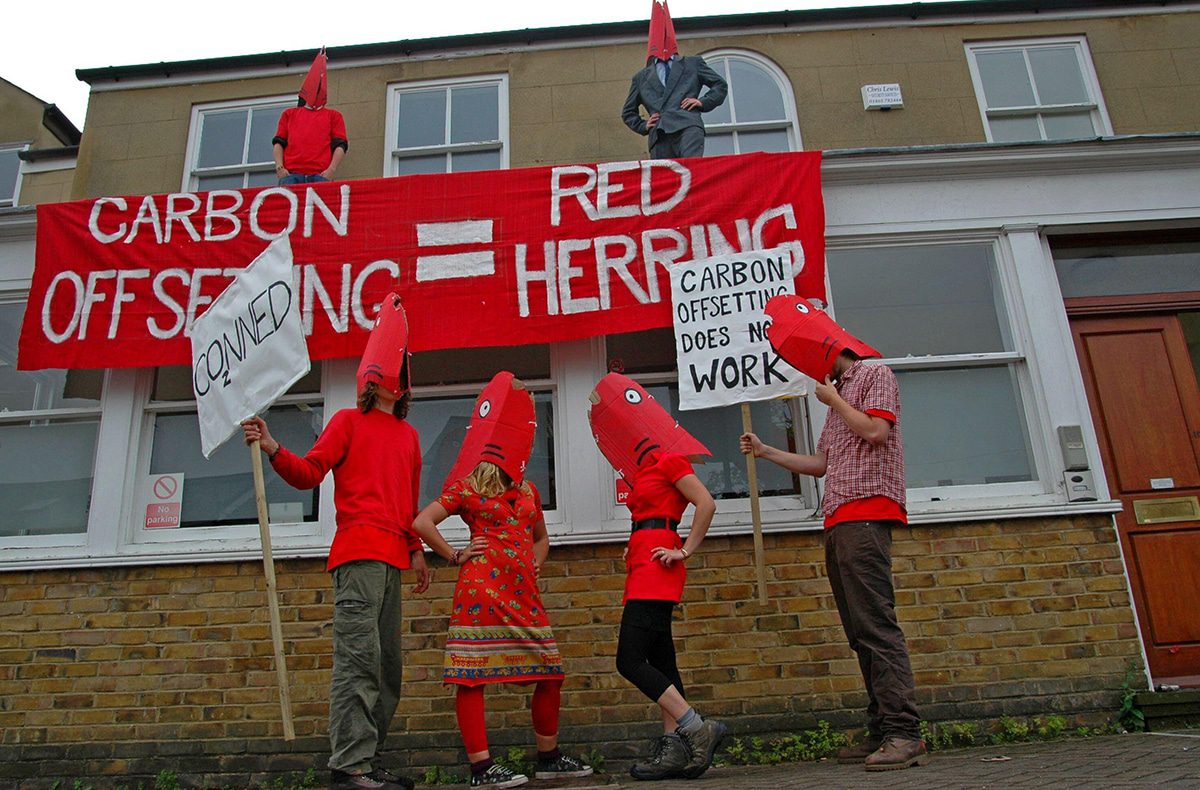
Starting in late 2021, KLM Airlines launched a “CO2ZERO” carbon offset program under the banner of “Fly Responsibly,” offering passengers the option “to offset (part of) the impact” of their flights by making a small payment into KLM’s “reforestation programme,” which consists of KLM’s purchase of offsets from a project in Panama called CO2OL Tropical Mix. Sounds like a great idea, right?
So it seemed, until last month, when environmental groups sued KLM Royal Dutch Airlines in The Netherlands for allegedly exaggerating the benefits of the carbon offsets it purchased and advertised to compensate for its flight emissions. Although the claimants acknowledged that “planting trees” is generally a good thing, they leveled a litany of criticisms at the notion of carbon offsets, asserting that KLM’s claims of associated greenhouse gas (GHG) reduction were overstated.
The KLM lawsuit is a wake-up call to any business relying on carbon offsets to fulfill stated “net zero” commitments. And it’s just the beginning. The voluntary market for carbon offsets is projected to reach $180 billion by 2030. Yet it is largely unregulated and fragmented, suffers from differing accounting methodologies and standards, and has been described as “the Wild West,” ripe for fraud.
The lack of uniform standards in or regulation of the Voluntary Carbon Market means that not all carbon offsets (also commonly called “carbon credits”) are created equal and that businesses who promote their “net zero” goals by relying on them face the same risk as KLM—being accused of “greenwashing”—spreading disinformation to present an environmentally responsible public image. Businesses that buy carbon offsets must know what they are buying, monitor the projects associated with the offsets they buy, and not oversell their utility in achieving “net zero” goals.
The Rise Of “Net Zero” Pledges And The Voluntary Carbon Market
It is now mainstream for large businesses to proclaim a goal of “net zero” emissions. Few businesses have the capability to extract CO2 from the atmosphere on a large scale. Achieving a “net zero” goal thus usually requires purchasing carbon offsets, in what has become known as the Voluntary Carbon Market (VCM). From 2018 to 2021, the VCM’s value grew from $300 million to $1 billion, and McKinsey estimates that it will grow rapidly in the coming decades, possibly reaching $180 billion by 2030.
The VCM allows the owners of projects that reduce atmospheric GHG levels to sell the “credit” for those reductions. These projects usually involve conserving forests or generating renewable energy. The owner of such a project applies to an (ostensibly) independent registry for tradable instruments known as carbon offsets. The registry examines the project, often in reliance on complex information supplied by the owner, and issues offsets to the owner based on the registry’s estimate of the project’s GHG reductions. The norm is for one offset to represent one metric ton of CO2 equivalent taken or kept out of the atmosphere. After a registry issues an offset, the project owner can sell it to whomever wants. The first buyers may be those who seek to profit by reselling it, such as brokers, retailers, or institutional investors. Eventually the offset will be bought by an “end user” who wants to take credit for the GHG reduction the offset represents, such as a company seeking to achieve “net zero.” At that point, the offset must be “retired” by the registry that issued it to ensure that it cannot be resold. As the theory goes, the end user of a carbon offset deserves credit for the GHG reduction the offset represents, because the end user’s patronage is what incentivized the GHG-reducing project from which the offset derived.
The Impact of Carbon Offsets Is Not Easily Measured
As explained by climate researcher Eli Mitchell-Larson, offset purchasers are “getting the ability to say they’ve neutralized one ton of their emissions” for each offset they purchase. When businesses make such statements, they are true only insofar as each offset they purchase actually represents no less than one ton of CO2 equivalent (tCO2e) being taken or kept out of the atmosphere. If the offsets actually represent a lesser GHG reduction, or none at all, then those statements would be misleading and potentially create liability. It is thus necessary for buyers to learn how to spot and avoid “low quality” offsets—those that are unlikely to actually achieve the GHG reduction they represent.
This can be a difficult task. A 2010 investigation by The Christian Science Monitor and The New England Center for Investigative Reporting concluded: “Voluntary carbon offsets are a ‘Wild West’ market ripe for fraud, exaggeration, and poorly run projects that probably do little to ease global warming.” According to McKinsey, little has changed in the ensuing decade. It characterizes the VCM as a “[f]ragmented and complex market with low to no regulation, different accounting methodologies with varying degrees of rigor and a variety of industry-created standards.” Climate policy experts Danny Cullenward and David Victor add that “[c]onflicts of interest run rife in the offsets world,” including because “the firms that verify offset projects’ purported emission reductions are nearly always paid by the project developers themselves.” Bloomberg has reported “gaping loopholes” in the market’s hyper-technical verification methods that allow verifiers to ignore common-sense signs of shenanigans. The consulting firm Frontier Economics calls the VCM a “market for lemons,” where a lack of oversight has allowed a “race to the bottom” to settle at a “‘low quality, low price’ equilibrium.” The Economist magazine agrees that the “price of a carbon offset is far too low,” largely because buyers cannot tell the quality of what they are buying. And Greenpeace broadly denounces carbon offsets as “the next big thing in greenwashing” and “a scammer’s dream scheme.”
The most obvious factor affecting an offset’s “quality”—and the potential for misstatements—is the reliability of the methodology used to calculate the GHG reduction. Scientific errors can lead to massive overestimates of GHG reductions. For instance, a recent analysis by the non-profit CarbonPlan found that the methodology used by California’s forestry-based offset program overlooked significant biological differences between tree species. This resulted in overestimating the program’s GHG reductions by 30%, which translated to an additional 30 million tCO2e in the atmosphere and $410 million in offsets that were worthless to the climate. The purchasers of such miscalculated offsets may unintentionally be making false statements about their progress in meeting “net zero” goals. Or they may be aware that they are doing so.
And when it comes to evaluating the impact offsets, the “hard science” may be the easy part. There are four conceptual problems with measuring an offset’s impact that contribute to litigation risks:
Additionality: “Additionality” is the key causal link that justifies giving credit for a GHG reduction. Additionality requires that the GHG-reducing activity of an offset project would not have occurred but-for the incentive to generate offsets. In other words, had the purchaser or intermediary not engaged in the trade, the seller would not have undertaken the carbon-reducing activity.
One study found that an alarming 52% of the offsets generated by wind farms in India through the United Nations’ Clean Development Mechanism derived from wind farms that “would very likely have been built anyway,” meaning that those offsets had nothing to do with GHG reductions. Because we can never know what project developers would have done in the absence of a market for offsets, the best we can do is make a subjective estimate about how “additional” a project seems to be. The less likely the project is to be additional, the lower the quality of its offsets.
Additionality is a major problem with forestry-based offsets, especially a common type of project known as REDD+, an acronym for “reducing emission from deforestation and forest degradation.” REDD+ projects aim to protect existing forests from being destroyed or degraded. But it is sometimes unclear that any destruction or degradation would have happened without the project. For instance, investigations by Bloomberg found that one environmental organization generated offsets to protect trees on Pennsylvania’s Hawk Mountain, even though those trees were already being protected by another NGO. The same organization recently sold offsets for purportedly protecting 72% of a forest called Pennsylvania Ridges, even though it had bought (and protected) most of that land in 1999. Likewise, another major environmental organization began selling offsets in 2013 for purportedly protecting the trees in South Carolina’s Beidler Forest, even though the organization has owned the forest since 1970 and, according to its former manager, “never intended” to cut them down. Such conduct could create legal exposure not only for the project developers, but also for those that buy their offsets and use them to support statements about their carbon footprints.
There is good reason to suspect that “non-additional” projects are the norm rather than the exception. By definition, “non-additional” projects can afford to sell offsets at much lower prices than “additional” projects. Thus, if offsets are suspiciously cheap, they likely come from non-additional projects. And, disturbingly, it turns out that most offsets in the VCM are suspiciously cheap: When timber executive Jim Hourdequin grew skeptical of the offset market and decided to calculate how much it would cost him to generate truly additional forestry offsets by truly reducing his harvests, he arrived at $60 per offset. Yet, in recent years, the VCM’s average price for forestry offsets has been around $5, and around $3 for offsets across all types.
Leakage: “Leakage” occurs when the suppression of a bad activity in one place results in an increase in that activity elsewhere. For instance, it is generally more profitable to use land in the Sumatran rainforest to farm palm oil than to conserve trees and sell offsets. Thus, even if the owner of one part of the rainforest abstains from palm oil farming to conserve the trees, the result may simply be that more palm oil is farmed elsewhere until supply matches demand. Such leakage would mean that any offsets derived from the eco-conscious landowner’s conservation of trees are unrelated to any overall GHG reduction. There is no way to measure leakage precisely; it can only be estimated. The more susceptible to leakage a project seems, the lower the quality of its offsets.
Permanence: Offset projects based on forestry and other “nature-based” ways of trapping carbon in plants and soil are generally useless in the fight against climate change unless they last a long time. One hundred years is a common standard. When, for instance, a forest being conserved by an offset project is destroyed, the carbon it had been storing is released into the atmosphere, defeating the purpose of the offsets generated and sold. This could happen by accident, as it did in 2021, when wildfires in the Western United States burned an estimated 153,000 acres of offset-project forests. Absent effective safeguards, this could conceivably happen through a mischievous “carbon spoofing” scheme. In the securities market, a trader engages in “spoofing” by placing a large buy order for a security with the intent to cancel it later, just to temporarily nudge up the price. In the carbon offset market, a landowner might be able to pull off a similar scheme by planting trees with the intent to cut them down soon after generating and selling an offset.
Before purchasing offsets derived from the storage of carbon in plants or soil, businesses should assess whether the risk that the carbon will escape is adequately accounted for. This could be through the maintenance of a so-called “buffer pool” of offsets that will be retired whenever necessary to compensate for any carbon’s unanticipated escape, such as in a wildfire. The greater the risk that the GHG reduction undergirding an offset will go “up in smoke” (e.g., because the associated buffer pool is too small), the lower the offset’s quality.
Double Counting: Generally speaking, “double counting” occurs when two companies take full credit for the same GHG reduction. For example, a project removes 1,000 tCO2e from the atmosphere, but sells 500 offsets to Company A and 580 offsets to Company B, resulting in Company A and Company B each taking full credit for the removal of the same 80 tCO2e. The greater the risk that an offset is being double-counted (e.g., because it comes from an untrustworthy source), the lower the offset’s quality.
The Litigation Risks of Carbon Offsets
The VCM’s lack of oversight, combined with the difficulty in accurately measuring the impact of carbon offsets, makes it ripe for litigation.
Securities Claims: Regulators have taken notice of the growth in VCM, which almost certainly portends increased enforcement activity and civil litigation. Last March, the United States Securities and Exchange Commission announced a proposed rule on climate-related disclosures that would require registered companies to divulge details about the offsets they purchase, including about their sources. Should the rule be implemented, it is likely to increase enforcement actions and private claims against public companies who are alleged to have made materially false or misleading disclosures about GHG reductions achieved via carbon offsets. A company that touts a “net zero” achievement might face fines if it turns out the claim was based on carbon offsets that were not as effective as claimed.
The Commodities Futures Trading Commission (CFTC), which regulates the U.S. derivatives market, including commodity futures, recently signaled that it is considering new rules relating to VCM. On June 2, 2022, the CFTC held a “Voluntary Carbon Markets Convening,” during which Commissioner Christy Goldsmith Romero expressed interest in “concerns about transparency, credibility, and greenwashing.” The same day, the CFTC announced a Request for Information (RFI) for public comment on a broad range of issues potentially bearing on adjustments to regulations to account for climate-related risk. Any potential rulemaking by the CFTC has material implications for legal risk for those who trade in VCM-related derivatives. For example, commodity pool operators and brokers may face enforcement actions and private civil liability for fraudulent solicitation of investments in VCM based upon misstatements about the reliability of related GHG reductions.
Consumer Protection Claims: The Federal Trade Commission (FTC) addresses carbon offsets in its non-binding “Green Guides” on environmental marketing. The Green Guides admonish those who sell offsets to “employ competent and reliable scientific and accounting methods to properly quantify claimed emission reductions.” They also require offset buyers to “clearly and prominently disclose if the carbon offset represents emission reductions that will not occur for two years or longer,” and warn against offsets that derive from GHG reductions that were already “required by law.” Given the Biden Administration’s increased focus on climate issues, the FTC may soon tighten these guidelines, and indeed, the Green Guides—last updated in 2012—are expected to undergo review this year. Companies who mislead consumers by falsely representing the GHG reductions they achieve through carbon offsets may expect to face enforcement actions and civil lawsuits, similar to the greenwashing suits dozens of companies have already faced alleging exaggerated claims of eco-friendliness.
State regulators have long viewed the carbon offset market as ripe for abuse. In 2008, ten states sent a letter to the FTC voicing concern that “[t]he lack of common standards and definitions, along with the intangible nature of carbon offsets, makes it difficult if not impossible for consumers to verify that they are receiving what they paid for and creates a significant potential for deceptive claims.” As the VCM continues to expand, there are multiple statutes that could be used to bring action for misstatements about carbon offsets, including state truth-in-advertising and consumer protection laws prohibiting false and deceptive practices.
Criminal cases are not out of the question. In a recent case, United States v. Ralston, prosecutors in the Southern District of New York charged three defendants with an alleged scheme to persuade victims to invest millions of dollars in carbon credits and other investments at significantly inflated prices. Prosecutors allege the scheme involved false and misleading representations, including that the purported investments would yield short-term, high-yield, no-risk returns, when in fact the carbon credits were fictitious. Two of the defendants pleaded guilty and the third is awaiting trial. VCM sellers who knowingly misrepresent the existence and value of carbon offsets to purchasers can likewise expect to face potential criminal liability.
Contract and tort claims: Given the VCM’s growing role as a store of value, there is likely to be increased litigation disputing the proper value of carbon offsets, even where “fraud” is not at issue. For example, in Police & Fire Ret. Sys. of City of Detroit v. Watkins, the parties disputed the value and liquidity of a capital contribution that took the form of “carbon credit entitlements.” Defendants claimed the entitlements had a value of $5 million, while the plaintiff asserted they were speculative and had “essentially no value” because, among other things, the facility that would generate the offsets had not yet been built, and the credits had not been registered with any carbon offset programs. With increasing trading and use of carbon credit in financings will come an increase in dispute about their value.
Certification organizations that develop standards for quantifying reductions in GHG or confirm whether projects meet their goals also face litigation risk. For example, in Aldabe v. Env’t Servs., Inc., the plaintiff allegedly entered into a contract with a certification body to “validat[e]” and “verif[y]” that a forest preservation project would satisfy required standards for a carbon credit program. After the parties’ relationship deteriorated, the plaintiff sued for breach of contract, negligence, and misrepresentation, alleging the failure to give timely notice of anticipated revisions to applicable standards, along with purported misrepresentations about the supply of validated carbon credits, which would affect the calculation of the price of each offset. Although the case was dismissed on jurisdictional grounds, it demonstrates the fraught nature of certifying that a VCM credit produces a threshold level of GHG reductions.
Finally, the efficacy of carbon offsets may be disputed in the context of land-use decisions, where developers and governments must defend environmental impact statements that purport to show GHG reductions. In Golden Door Properties, LLC v. County of San Diego, objectors filed petitions against a county in which they challenged the county’s use of GHG mitigation measures allowing the purchase of carbon offsets from anywhere in the world “without demonstrating that such offsets will be fully enforceable, verifiable, permanent, and additional.” The Court of Appeal concluded that the county had failed to adopt a Climate Action Plan (CAP) in compliance with the California Environmental Quality Act (CEQA) because, among other things, the CAP did not ensure that the offsets were “genuine, verifiable, and enforceable under law that is at least as strict and enforceable as is California law.” Developers and local governments who rely upon carbon offsets to satisfy required GHG standards for projects can expect to face similar challenges over the accuracy and reliability of their environmental impact models.
Not all carbon offsets are created equal. Regulators, investors, and NGOs are increasingly scrutinizing the quality of offsets used by companies to meet “net zero” goals. Businesses must carefully examine what they are buying and ensure they are not getting drawn into scams and that their public statements align with what the offsets are actually likely to achieve.
Co-authors: Anthony P. Alden, Ian Weiss and Danielle Shrader-Frechette



